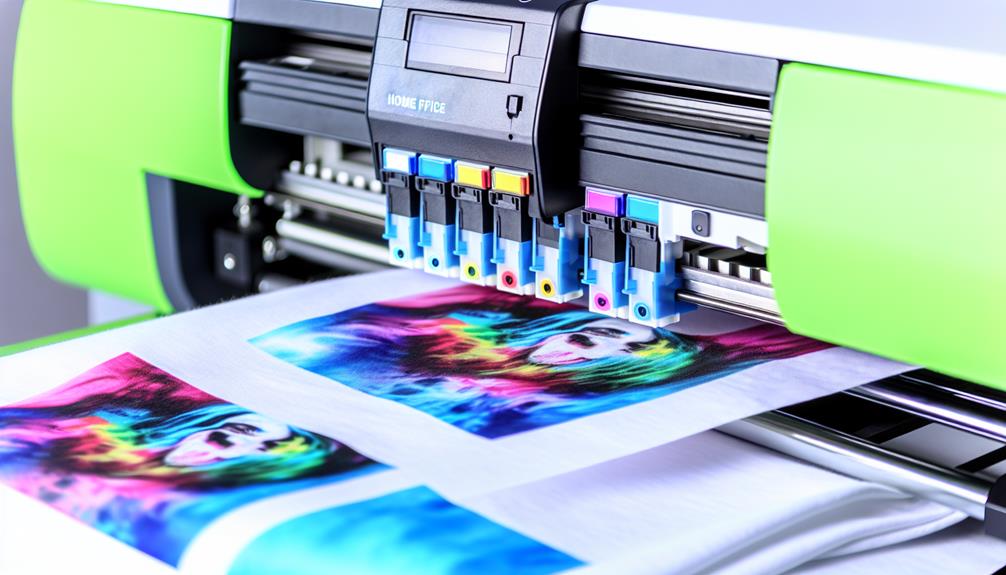
DTF vs Sublimation: Which Method is Right for You?
In the DTF Transfers world of custom printing, two methods often take center stage: DTF (Direct to Film) and sublimation. Both methods have their unique advantages, applications, and quirks that can make the decision-making process quite complex. So, whether you're a business owner looking to expand your service offerings or a DIY enthusiast wanting to create custom apparel, understanding these techniques is essential.
In this comprehensive guide, we'll explore every nook and cranny of DTF vs Sublimation: Which Method is Right for You? By the end of it, you'll have a clearer understanding of which printing method suits your needs best.
What is DTF Printing?
Understanding DTF Transfers
DTF printing involves creating designs on a special film that can then be transferred onto various surfaces using heat. This process has gained popularity due to its flexibility and ease of use.
The Process of DTF Printing
Advantages of DTF Printing
- Versatility in materials
- Vibrant colors
- Ability to print on dark fabrics
Disadvantages of DTF Printing
- Requires specialized equipment
- Initial setup costs can be high
What is Sublimation Printing?
Understanding Sublimation Printing
Sublimation printing uses heat to transfer dye onto materials like fabric, metal, or plastic. Unlike DTF, sublimation requires specific types of fabrics—typically polyester or polymer-coated substrates.
The Sublimation Process
Advantages of Sublimation Printing
- High-quality finishes
- Excellent durability
- No hand feel; dyes become part of the fabric
Disadvantages of Sublimation Printing
- Limited to light-colored polyester substrates
- Higher setup time and costs for certain items
Key Differences Between DTF and Sublimation
Material Compatibility
One significant difference lies in material compatibility. While DTF can be used on a variety of fabrics including cotton, sublimation strictly requires polyester or specially coated materials.
Color Brightness and Finish
Sublimation offers vibrant colors that are embedded into the fabric itself, resulting in no hand feel—great for sportswear! In contrast, DTF prints can feel more substantial but still provide excellent color vibrancy.
Durability and Longevity
When it comes to longevity, sublimated prints tend to outlast those created with DTF due to their integration into the fabric fibers rather than merely sitting atop them.
DTF vs Sublimation: Which Method Is Right for You?
So how do you decide between these two processes? It all boils down to what you're aiming for:
If you're looking to work with diverse fabric types—cotton included—and need vibrant colors without concern for substrate type, consider going with DTF.
If high durability on light-colored garments made from polyester is your goal—and you want no hand feel—sublimation may be your path forward.
Applications for DTF and Sublimation
DTF Applications
- Custom T-shirts
- Hoodies
- Bags
Sublimation Applications
- Sports jerseys
- Home décor items (like cushions)
- Personalized gifts
Choosing Equipment for Each Method
Best DTF Printers Available Today
When diving into DTF printing, investing in quality machinery like Epson or Roland printers can yield impressive results.
| Printer Model | Key Features | Price Range | |---------------------|-------------------------------------------|--------------| | Epson SureColor | Great color accuracy | $1,500-$2,500| | Roland VersaStudio | Compact size with excellent versatility | $3,000-$5,000|
Essential Equipment for Sublimation Printing
For sublimation enthusiasts or businesses, having a reliable printer and heat press DTF Prints combo can make all the difference.
| Equipment | Purpose | Price Range | |---------------------|-------------------------------------------|--------------| | Sawgrass Virtuoso | High-quality dye-sublimation printing | $600-$1,200 | | Heat Press Machine | Transferring designs onto substrates | $300-$800 |
Cost Considerations in Choosing Between Methods
When deciding between these two methods financially:
Environmental Impact of Each Method
As sustainability becomes increasingly crucial in modern-day business practices:
It's essential that businesses consider eco-friendly practices regardless of chosen method!
FAQs
Q1: Can I use any fabric with sublimation printing?
A1: No! Sublimation works best on white or light-colored polyester fabrics only.
Q2: Is there a significant difference in cost between DFT and sublimation setups?
A2: Yes! Initial investments vary significantly based on equipment quality but overall costs should align with expected return-on-investment projections.
Q3: How durable are DFT prints compared to sublimated ones?
A3: Generally speaking, sublimated prints yield longer-lasting results since they bond directly into fibers rather than resting atop them like many DT transfers do!
Q4: Are there limitations regarding colors when using either method?
A4: Color vibrancy may differ between processes; while both offer impressive hues under optimal conditions—sublimated inks typically produce richer tones through embedding!
Q5: Can I mix both methods together?
A5: Absolutely! Many businesses utilize both processes depending on customer demands—leveraging each technique's strengths optimally!
Conclusion
Choosing between DTF vs Sublimation ultimately hinges upon personal preference along with project specifications outlined earlier throughout this article—it’s vital not only evaluate immediate needs but also future objectives too!
Whether opting for vibrant direct-to-film transfers—or diving deep into long-lasting dye-sublimated creations—both avenues represent exciting opportunities within custom printing realms today!